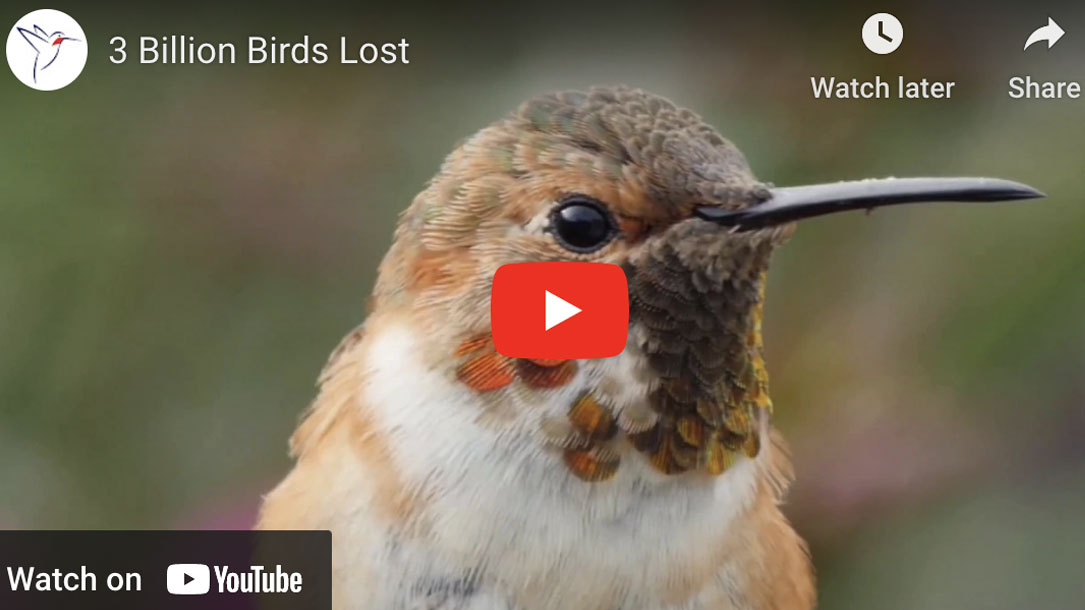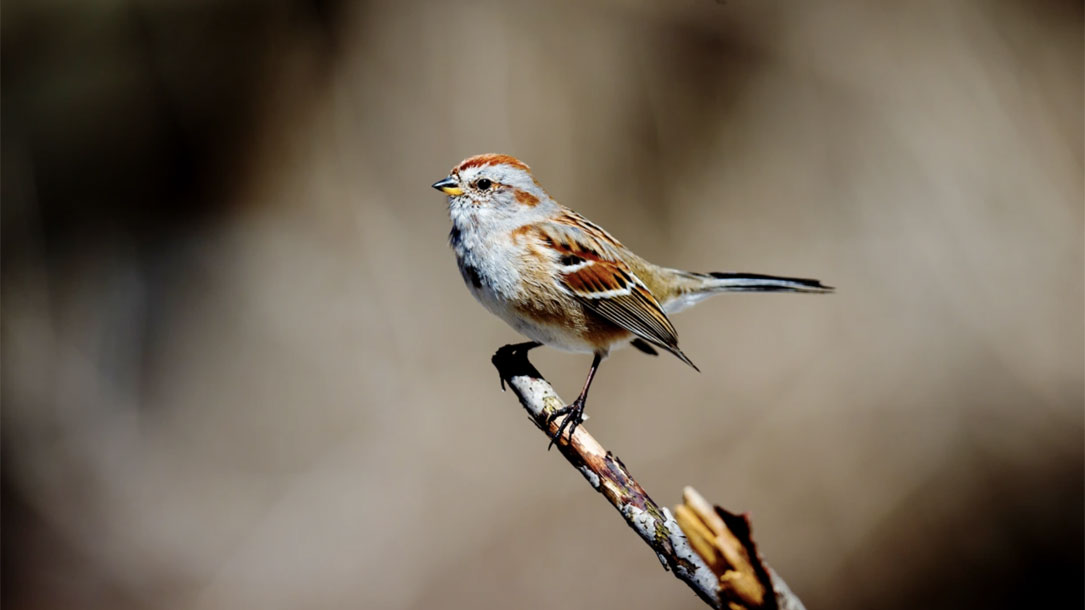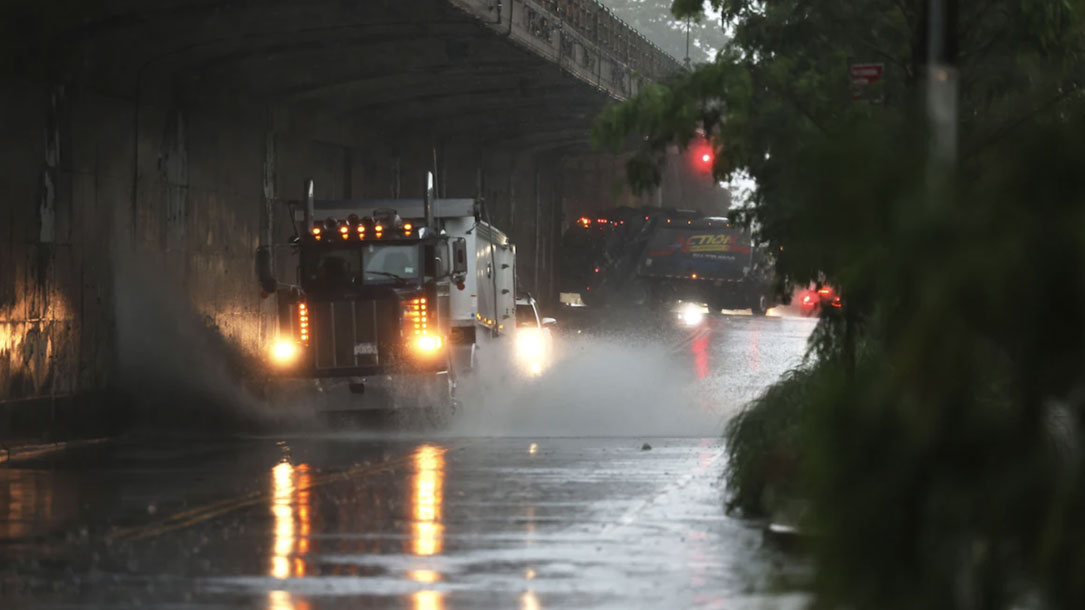
Nearly 3 billion birds gone
The first-ever comprehensive assessment of net population changes in the U.S. and Canada reveals across-the-board declines that scientists call “staggering.” All told, the North American bird population is down by 2.9 billion breeding adults, with devastating losses among birds in every biome. Forests alone have lost 1 billion birds. Grassland bird populations collectively have declined by 53%, or another 720 million birds.

Just hearing or seeing birds can boost our mental health, new report suggests
“Our main finding is that there is a time-lasting association between seeing or hearing birds and improved mental well-being,” said the study’s lead author, Ryan Hammoud, a PhD candidate and a research assistant at the institute of psychiatry and psychology and neuroscience at King’s College London…

Messaging guru offers list of words to use (and avoid) to build support for climate solutions
As a messaging expert, Luntz is now offering his advice on how activists should talk about the problem of climate change and solutions including clean energy, featuring his version of the ever-popular list of “words to use and lose”…

Agrivoltaic solar tracker uses cables instead of buried steel
The Suntracker system is suspended by cables, rather than mounted on steel driven into the ground, providing what the company says is the lowest levelized cost of energy (LCOE) for high-clearance solar. Rute reports that by using cables rather than steel foundations, steel use is reduced by as much as 30%.
Another advantage of the cable system is that the land does not have to be disturbed in order to install the system, which is a benefit in the agricultural industry. It also enables the land to be returned to its original condition in the event that the solar installation were to be removed…

Excessively wet year in eastern U.S. shows fingerprints of climate change
Five tropical storms and a summer of frequent thunderstorm activity have propelled parts of the eastern United States to one of its wettest calendar years on record.
Through November, 25 of 344 climate regions nationwide reported precipitation that exceeded 90 percent of years since 1895. All but two of these top-10 percent-rainfall regions were east of the Mississippi River, spread from Louisiana to Massachusetts and Illinois to Florida.

Annual 2021 Drought Report
Overall, when integrated across the nation and across the entire year, 2021 was a warm year with precipitation averaging near the middle of the historical distribution. The annual nationwide ranks were fourth warmest and 57th wettest (71st driest), based on data for 1895-2021. But this was a year of extremes as considerable variation occurred throughout the year and across the country. The year was unusually wet from the Gulf of Mexico coast to the eastern Great Lakes and southern portions of New England, where Massachusetts had the ninth wettest year on record and three other states ranked in the top twenty wettest category.

Climate change is ratcheting up the pressure on bees
Drought conditions in the western U.S. in 2021 dried up bee forage — the floral nectar and pollen that bees need to produce honey and stay healthy. And extreme rain in the Northeast limited the hours that bees could fly for forage.
In both cases, managed colonies — hives that humans keep for honey production or commercial pollination – were starving…

Nests are bee nurseries
Female bees build nests to protect their offspring from bad weather, predators, parasites and disease. Bees nest in cavities that they either find or create. Each of the 4,000 bee species found in North America has a unique life history and nesting preferences. Most North American bee species (>70%) nest underground. Ground nesting bees dig tunnels or look for abandoned holes made by other animals. Other bee species prefer to nest aboveground. Females look for hollow twigs, chew tunnels in dead logs or take advantage of preexisting burrows left by wood-boring beetles. Some species search for naturally occurring crevices in stones and trees and will even occupy pinecones or empty snail shells!

A common soil pesticide cut wild bee reproduction by 89% – here’s why scientists are worried
When you think of bees, a hive humming with activity probably comes to mind. But most of the world’s 20,000 bee species don’t call a hive home. These wild species lead solitary lives instead, and around 70% of them build nests underground where they raise their offspring on the nectar they gather from flowers.
Incredibly, almost all scientific understanding of how pesticides affect bees has came from testing domesticated honeybees, and, more recently, bumblebees. That’s largely because these species tend to be easier to work with in lab conditions. How non-social bees cope with these chemicals is largely understudied, despite them making up the vast majority of bee species worldwide.

So you want to know how the Inflation Reduction Act can help you reduce your climate footprint
There are incentives for home efficiency, heat pumps, electric vehicles, home solar and battery storage, and more. But my favorite part of the bill (if I had to pick just one) is that, at its core, it incentivizes planning ahead…












